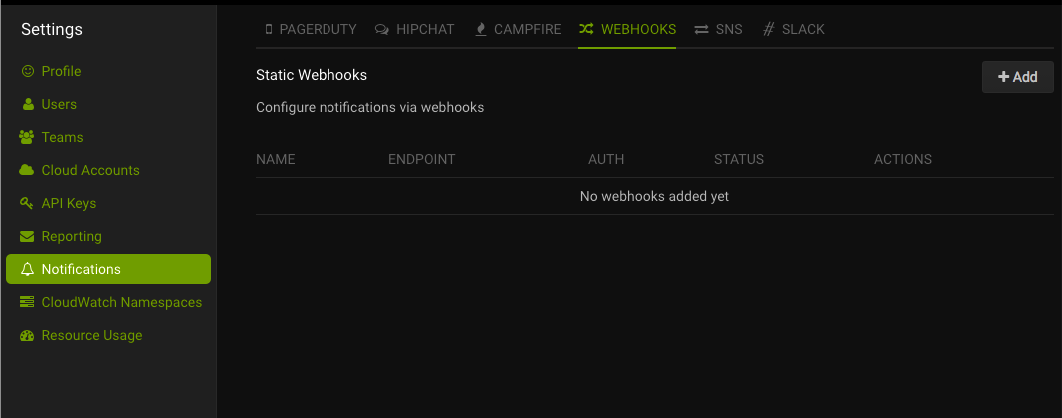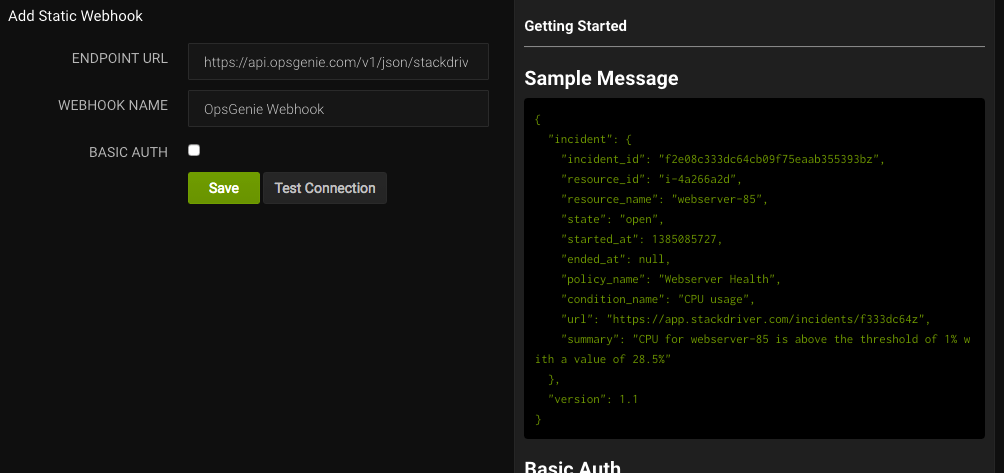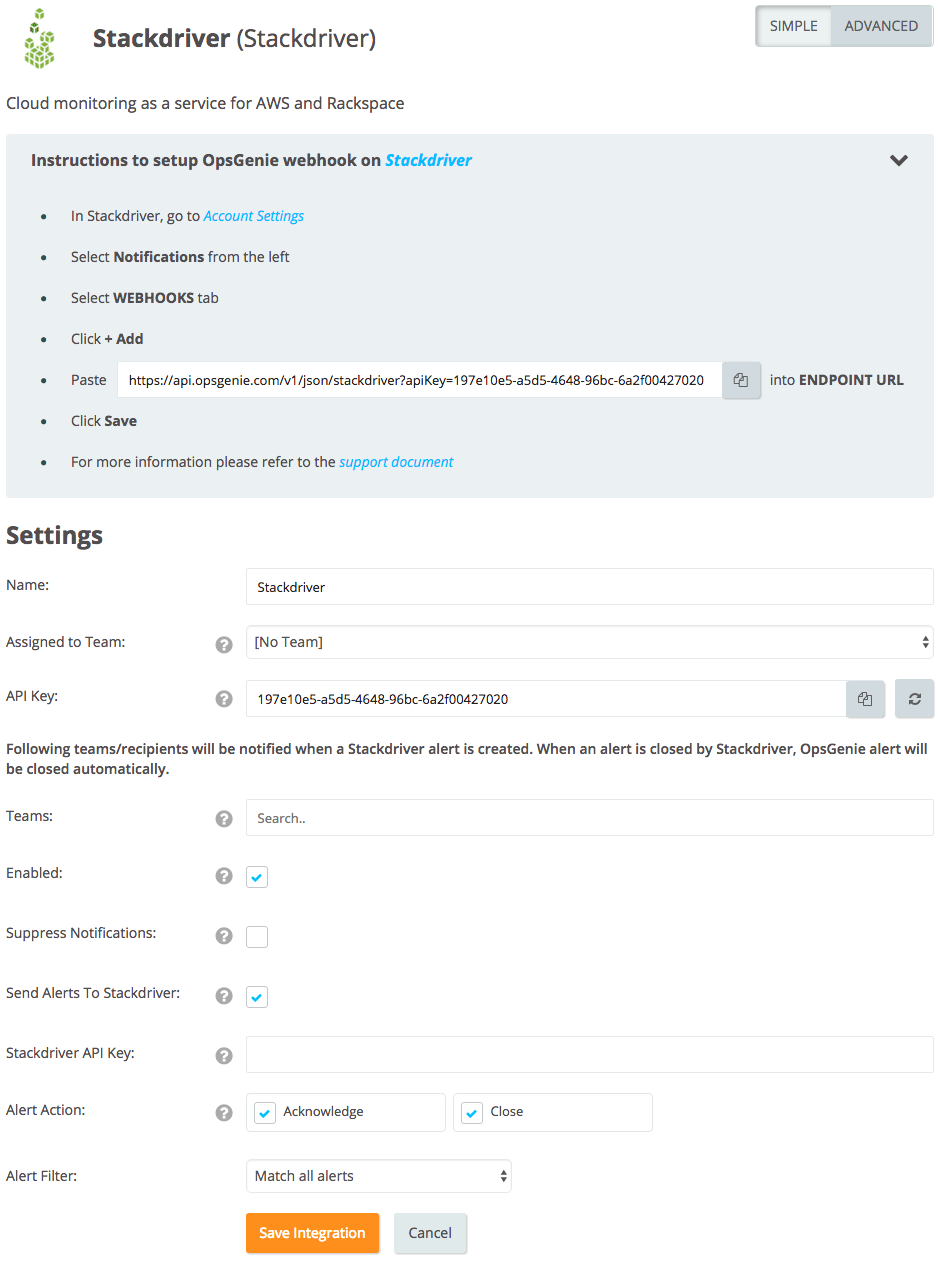Stackdriver Integration
Stackdriver is a popular, full-stack, intelligent monitoring service of infrastructure systems and applications running on Amazon Web Services and Rackspace cloud environments.

Stackdriver’s goal is to help Dev and Ops teams manage large, distributed applications running in the public cloud. It visualizes applications, systems, and infrastructure metrics. Also, Stackdriver provides a policy system to alert users when predefined thresholds are breached.
What does Opsgenie offer Stackdriver users?
Use Opsgenie’s Stackdriver Integration to forward Stackdriver incidents to Opsgenie, and Opsgenie alerts to Stackdriver. Opsgenie determines the right people to notify based on on-call schedules– notifies via email, text messages (SMS), phone calls, and iPhone & Android push notifications, and escalates alerts until the alert is acknowledged or closed.
Functionality of the integration
- When you create an incident in Stackdriver, it creates an alert in Opsgenie.
- When you acknowledge an incident in Stackdriver, the alert is acknowledged in Opsgenie.
- When you close an incident in Stackdriver, the alert is closed in Opsgenie.
- When you acknowledge an alert in Opsgenie, the incident is acknowledged in Stackdriver.
- When you close an alert in Opsgenie, the incident is closed in Stackdriver.
Add Stackdriver Integration in Opsgenie
- Please create an Opsgenie account if you haven't done so already.
- Go to Opsgenie's Stackdriver Integration page.
For Free and Essentials plans, you can only add the integrations from the Team Dashboards, please use the alternative instructions given below to add this integration.
- Specify who is notified of Stackdriver alerts using the Teams field. Autocomplete suggestions are provided as you type.
An alternative for Step 2) and Step 3) is to add the integration from the Team Dashboard of the team which will own the integration. To add an integration directly to a team, navigate to the Team Dashboard and open Integrations tab. Click Add Integration and select the integration that you would like to add.
- Copy the Webhook URL.
- Click Save Integration.

Configuration in Stackdriver
- In Stackdriver, go to Account Settings.
- Select Notifications on the left.
- Select the WEBHOOKS tab.
- Click + Add.

- Paste the integration API URL into "ENDPOINT URL".
- Click Save.


Advanced Configuration Settings in Opsgenie


Acknowledging and Closing Incidents in Stackdriver (Optional)
- Set the integration to automatically acknowledge or close an incident in Stackdriver, when you acknowledge or close the alert in Opsgenie.
- In order to do this, select the Send Alerts To Stackdriver option in integration settings.
- After enabling this option, the "Stackdriver API Key" field appears.
- In Stackdriver, click on the Username drop-down menu on the top right. Select Account Settings.
- Select API Keys from the left menu.
- Click on "+ Add" button.
- Give the API Key a description and select API Admin Key as "Access Role".
- Click Save.
- Copy the newly created Stackdriver API Admin Key and paste it into the "Stackdriver API Key" field in Opsgenie.

Sample payload sent from Stackdriver
{
"incident": {
"incident_id": "f2e08c333dc64cb09f75eaab355393bz",
"resource_id": "i-4a266a2d",
"resource_name": "webserver-85",
"state": "open",
"started_at": 1385085727,
"ended_at": null,
"policy_name": "Webserver Health",
"condition_name": "CPU usage",
"url": "https://app.stackdriver.com/incidents/f333dc64z",
"summary": "CPU for webserver-85 is above the threshold of 1% with a value of 28.5%"
},
"version": 1.1
}Sample Alert

Updated 6 months ago
